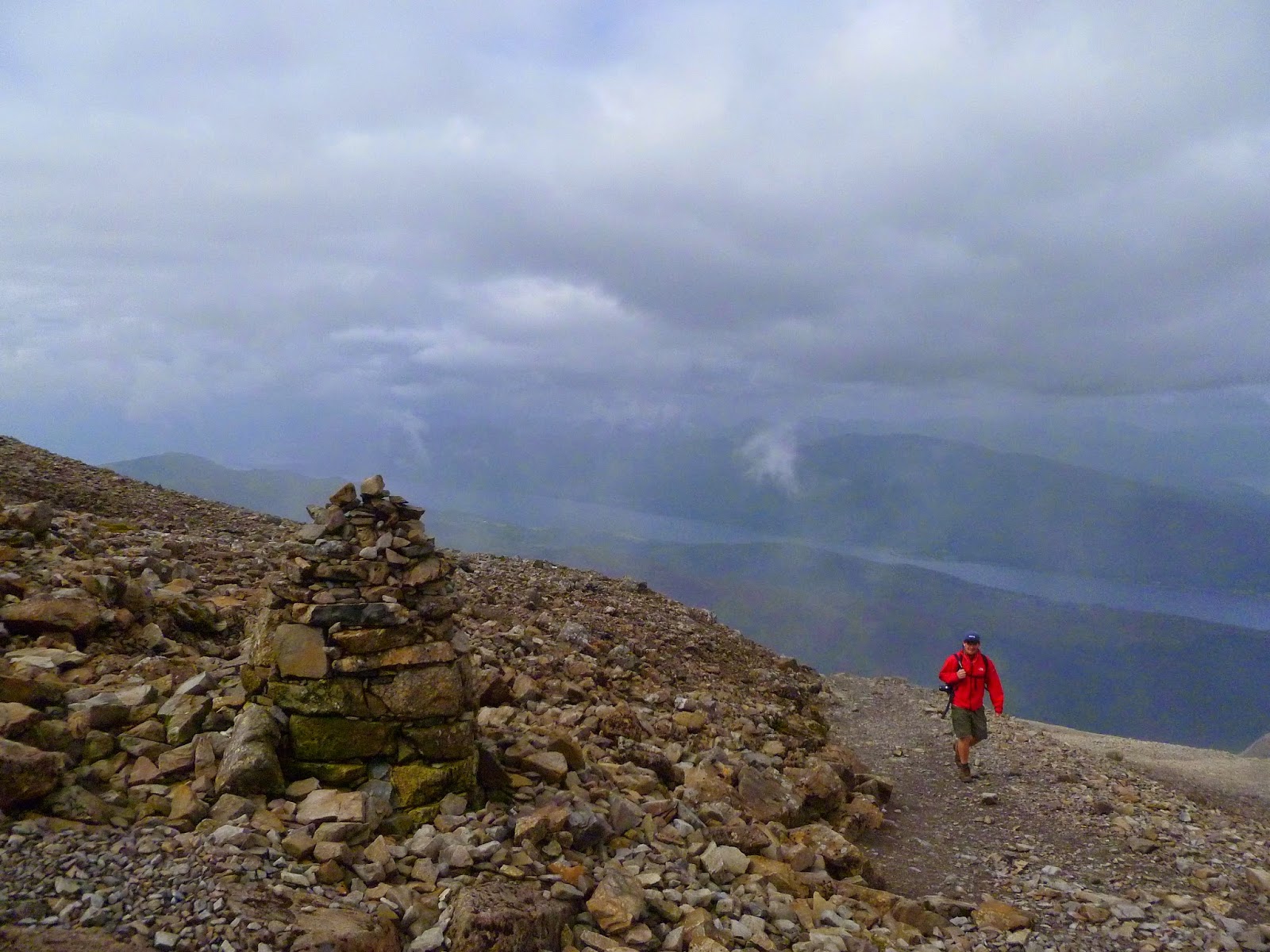"Daddy," asked the girl in front of us on the foot path, "is Ben Nevis the tallest mountain in the world?" Her blonde pony tail swung as she looked to her father for confirmation.
"No,
not the tallest."
"The
second tallest then?" She piped up, in her perfect aristocratic
accent. Ben Nevis is certainly the tallest mountain in her world. At
1,344 meters (4,409 ft), it holds the title as
the UK's tallest peak.
We passed the family, and worked our
way up Nevis's shoulder, pausing to catch our breath or for a sip of
water, but always pacing ourselves to keep ahead of those moving more
slowly and allowing faster walkers to pass. We
were two of a hundred? Two hundred? Five? that streamed to the
summit. So many different languages, ages, levels of fitness and
preparedness. Families climbed, dogs climbed, single people, couples,
and groups climbed. People in jeans and people decked out in trekking
gear climbed. We passed a family speaking German and then stepped to
the side as three men wearing black belt uniforms passed us. A man
climbed in a kilt, sporran, and knee socks; and another in a leather
jacket, cowboy hat, aviator glasses, corduroy shorts and Keds. Some
climbed slowly, some plodded, some ran, all moved steadily upward.
The night before we had watched the parade of
ants as it crawled down the mountain, and now we were a part of it. A
communal society formed around the sugar bowl of the summit.
 The path turned and climbed more
steeply past blooming heather and wild thyme. We passed the Half Way
Lochain. Starry Saxifrage bloomed from the shelter of a rock. Down
below us, the pilgrims climbed on, a serpent of aspirants, single
file. The flowers gave way to sedges, then ferns, and finally lichen.
We climbed through a meadow of rock: felsenmeer. The exposed contours
and subtleties of color enchanted me. Fog swirled around us, parting
to reveal a glimpse of Fort William then the curtains drew closed
again. The
mist thickened. Cairns marched into the gloom, centuries along the
avenue, guiding our way.
The path turned and climbed more
steeply past blooming heather and wild thyme. We passed the Half Way
Lochain. Starry Saxifrage bloomed from the shelter of a rock. Down
below us, the pilgrims climbed on, a serpent of aspirants, single
file. The flowers gave way to sedges, then ferns, and finally lichen.
We climbed through a meadow of rock: felsenmeer. The exposed contours
and subtleties of color enchanted me. Fog swirled around us, parting
to reveal a glimpse of Fort William then the curtains drew closed
again. The
mist thickened. Cairns marched into the gloom, centuries along the
avenue, guiding our way.
I've
never been to India or Nepal, but it made me think of the pilgrimages
to a hilltop temple or shrine, and I wondered what we were all
seeking up there in the clouds together. But I'll tell you, it was
something. As we neared the summit, those heading down met our eyes
and smiled broadly, their faces alight.
At the summit, the pilgrims held a
party. They scaled the summit marker and snapped pictures, drank
wine, pulled out picnics. They ducked into the once-observatory,
shrugged on outer shells of bright nylon, and kept moving. They
peered into the cloud as if they could summon a view from force of
will. Then they turned and headed downhill, leaving their crumbs to
the snow buntings. We turned, too, shouldered our packs and started
down, smiling brightly into the faces of those who climbed toward us.








